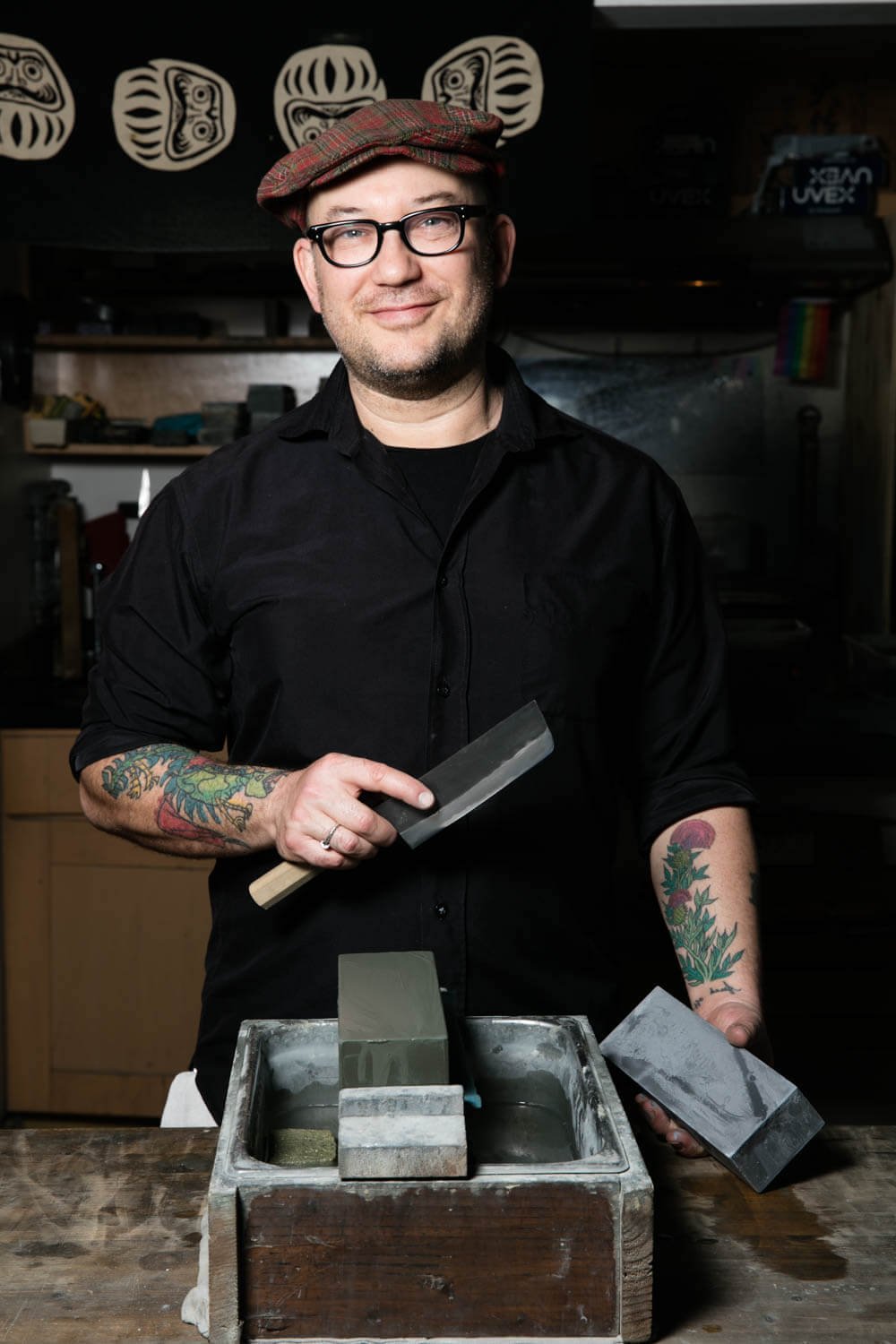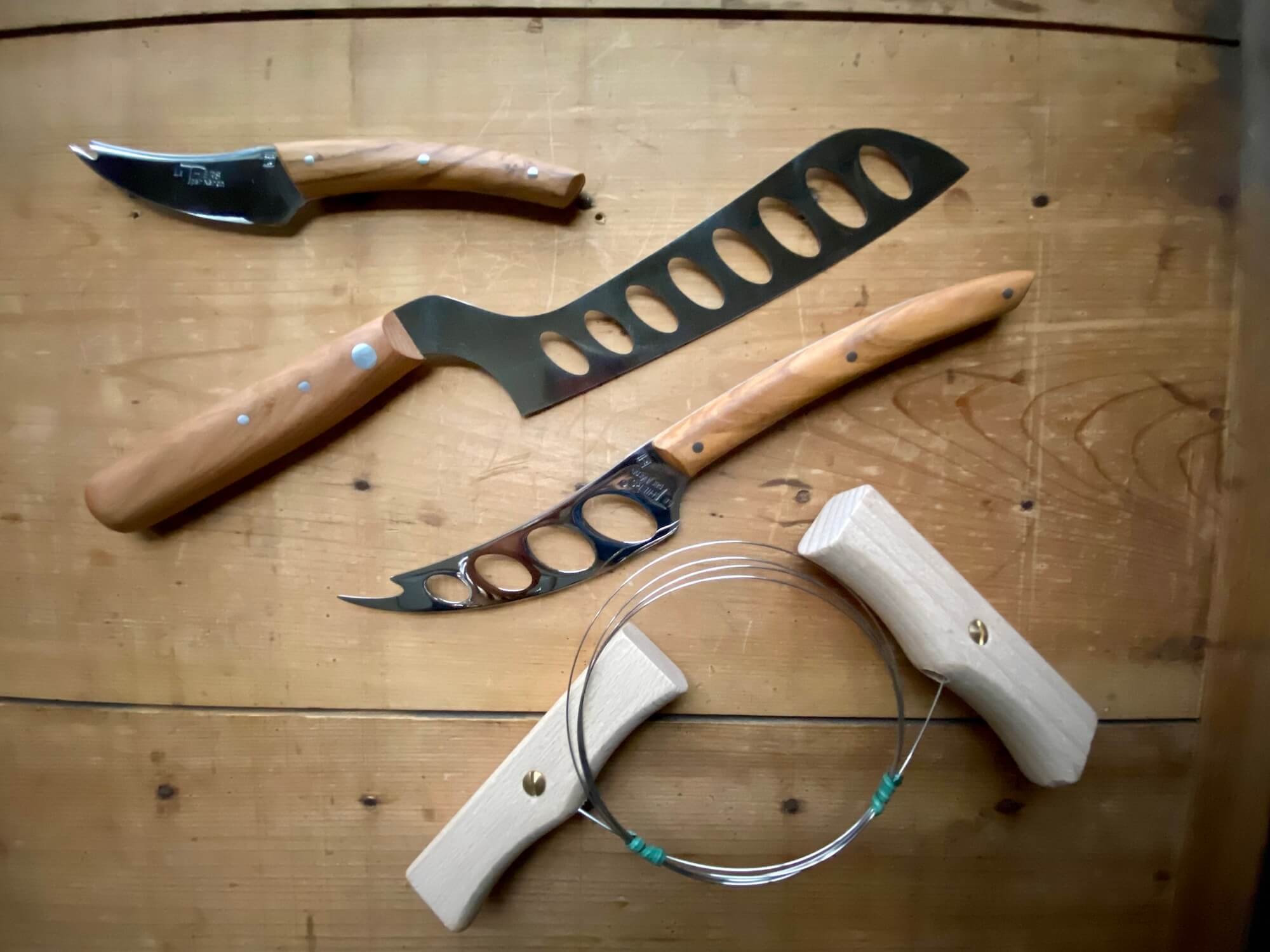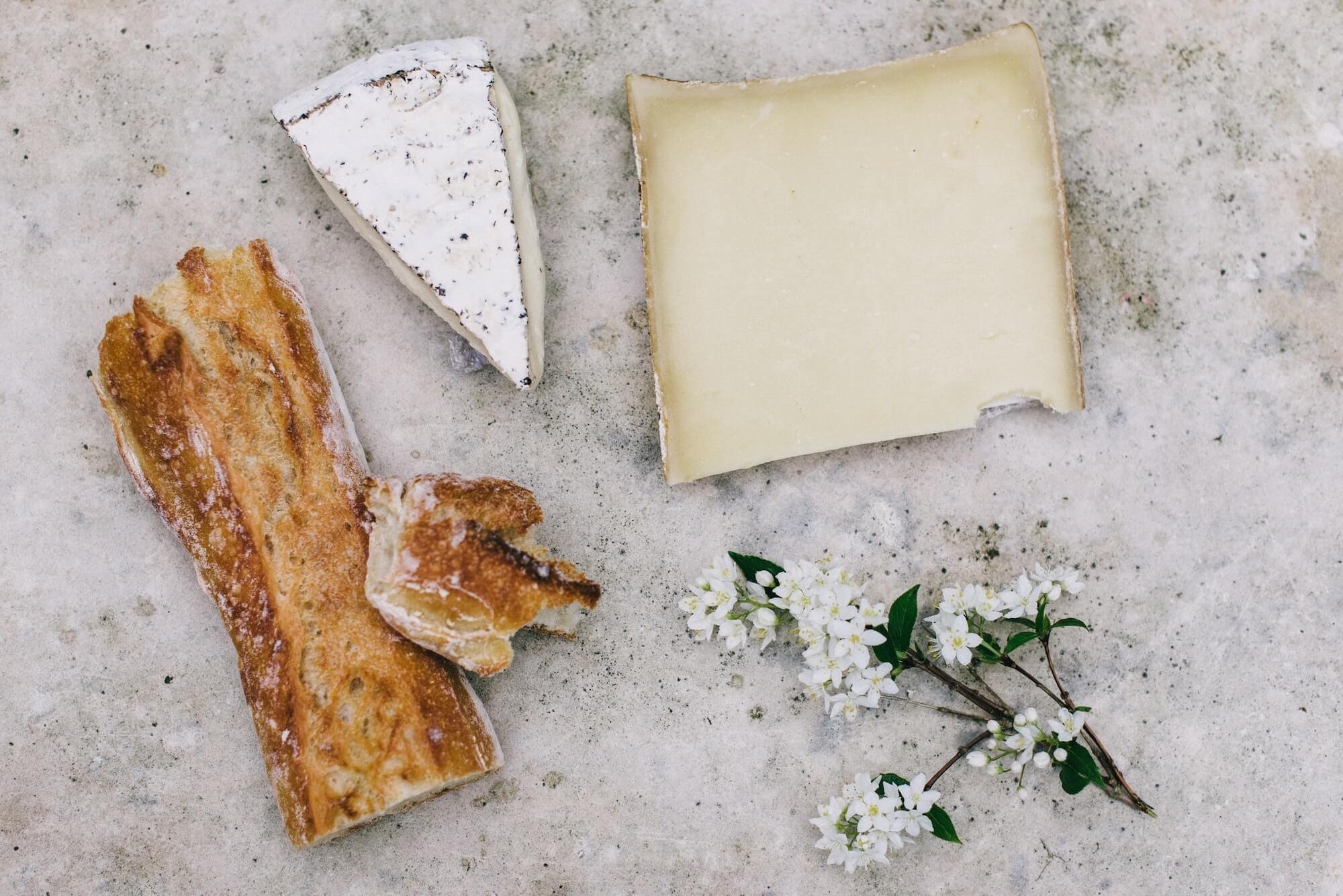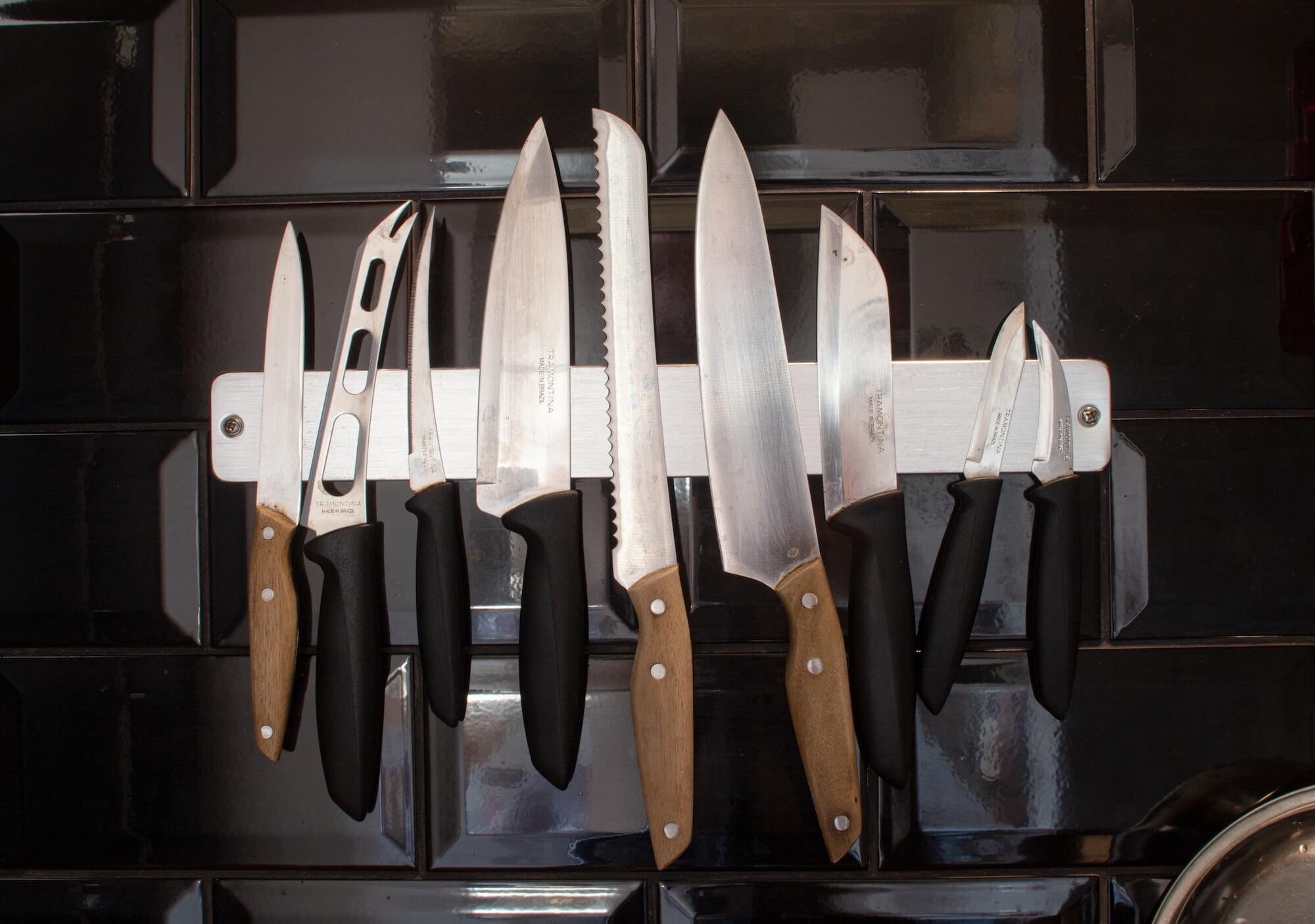A Knife Expert Shares 5 Tips for Choosing and Caring for Your Cheese Knives
Josh Donald photo credit Molly DeCoudreaux.
If you’re a cheese lover, chances are you’ve got a set of cheese knives somewhere in your kitchen. But the standard trio—a stubby, shovel-shaped spade for chunking cheese, a flat spade for slicing hard cheeses, and a thinner, fork-tipped knife for snagging a hunk of Brie or spearing that last cornichon—aren’t necessarily the best options for serving cheese, and they’re almost certainly not the best for breaking down larger pieces into bite-size ones. So what’s a cheese lover to do?
We got in touch with knife expert Josh Donald, co-owner of San Francisco knife shop Bernal Cutlery and co-author of Sharp: The Definitive Introduction to Knives, Sharpening, and Cutting Techniques, with Recipes from Great Chefs, to get some tips on sourcing, storing, and maintaining quality cheese knives.
Good cheese knives don’t have to be expensive, but they do need to be well-made—and the right shape.
For breaking down wedges or small wheels into smaller cuts, Donald recommends a good, wide-heeled chef’s knife—the same one you’d use for chopping onions or breaking down a chicken—for semi-firm and firm cheeses. A paring knife with a sharp, narrow blade works well for soft and semi-soft cheeses (more on those in a minute).
For serving, he said, it’s better to invest in one versatile, well-made cheese knife that can handle a variety of styles rather than relying on the stubby, dull set that came with your first cheese board.
Donald’s favorite cheese knife—also a bestseller at Bernal—is the Langloch, made in Solingen, Germany by Robert Herder Windmühlenmesser.
“I like that it’s thin,” he said. “One thing I’ve found with cheese knives used for service is that they’re often a little bit chunky, and if they’re really thick, they just don’t cut hard cheeses very well.” Avoid knives with flat blades with no taper from the spine to the cutting edge. “It’s probably not going to be a good performer if it’s really plow-shaped.”
The Langloch’s six-inch blade is large enough to handle prep but not too large to use at table, and the offset orientation leaves plenty of room so your knuckles don’t hit the board while cutting. Finally, oval-shaped holes running through the thin, hand-ground blade—a style sometimes called a “skeleton knife”—keep soft and semi-soft cheeses from sticking.
Bernal also stocks a more budget-friendly option, the elegant Néron Le Thiers knife. A more petite option with a curved, cutout blade, it can be used for small, quick prep jobs or on a variety of cheese styles at table.
Temperature is important not just when serving cheese, but also when you cut it
Unlike most vegetables and proteins, temperature matters a lot when it comes to cutting cheese. “Cutting a soft cheese with a rind is very different when it’s cold than when it’s warm,” Donald said. “How runny or sticky it gets when it’s a little bit warmer can have a big effect as to how well executed the cut will be.”
While all cheese should be brought to room temperature before serving, a particularly soft, ripe, or creamy cheese will cut more cleanly straight out of the fridge—something to keep in mind as you’re plating up cheese boards for entertaining. Conversely, you’ll have an easier time breaking down a block of very firm cheese like Parmesan into clean slices after it’s had an hour or so to warm up.
In some cases, the best cheese knife is a wire
For soft, semi-soft, semi-firm, and even some firm cheeses, the best way to make clean, even cuts isn’t with a knife, but with a wire. (Ask the average cheesemonger about their most-used utensils behind the counter, and there’s a good chance a wire is high on the list.)
“I’m a knife guy, but cheese wires make a lot of sense,” Donald said. “There’s a lot of friction and sticking when you cut cheese, so a tool with as little surface area as possible makes a big difference.”
Bernal has enhanced its cheese knife selection to include an Italian hand wire with wooden handles, but this style of wire is more often used to break down whole wheels of cheese. If you buy in smaller quantities, consider a harp-style wire cutter that can be used to quarter a small wheel of Camembert, cut butter into uniform cubes for baking, or trim thin slices of firm cheese for a snack plate.
Cheese knives need the same care as the rest of the knives in your kitchen
Just because they’re cutting a relatively soft, easygoing food, Donald said, doesn’t mean your cheese knives don’t need basic care. “Number one is, don’t put them in the dishwasher.” The harsh environment of the dishwasher—and clanking around with all your other utensils—can dull blades and damage handles.
Wash your cheese knives by hand and wash them well. “Soap isn’t bad for knives,” Donald said. “Sometimes we get knives in for sharpening that have a kind of Middle Ages odor to them, and that’s not really necessary.”
Cheese knives that rely on a sharp edge to do their work should be stored so they don’t come into contact with other objects, so resist the urge to keep them loose in your utensil drawer. Consider using a magnetic knife strip or blade covers to protect them and keep them sharp.
Don’t cut on anything but wood—and keep prep boards and serving boards separate
Finally, Donald said, the same rules we should be following for our prep knives around cutting surfaces apply to cheese knives. Never cut on hard surfaces like glass, marble, or ceramic. In addition to dulling your knives, the risk of accidents goes up when working on this kind of hard, unforgiving surface.
It’s also a good idea, in general, to keep boards for prep and service separate. That way, you won’t dull your knives on the marble slab or vintage platter you love to style your cheese snacks on—and you won’t scuff and scratch your wooden serving boards while you’re breaking down a wedge into bite-sized pieces.





